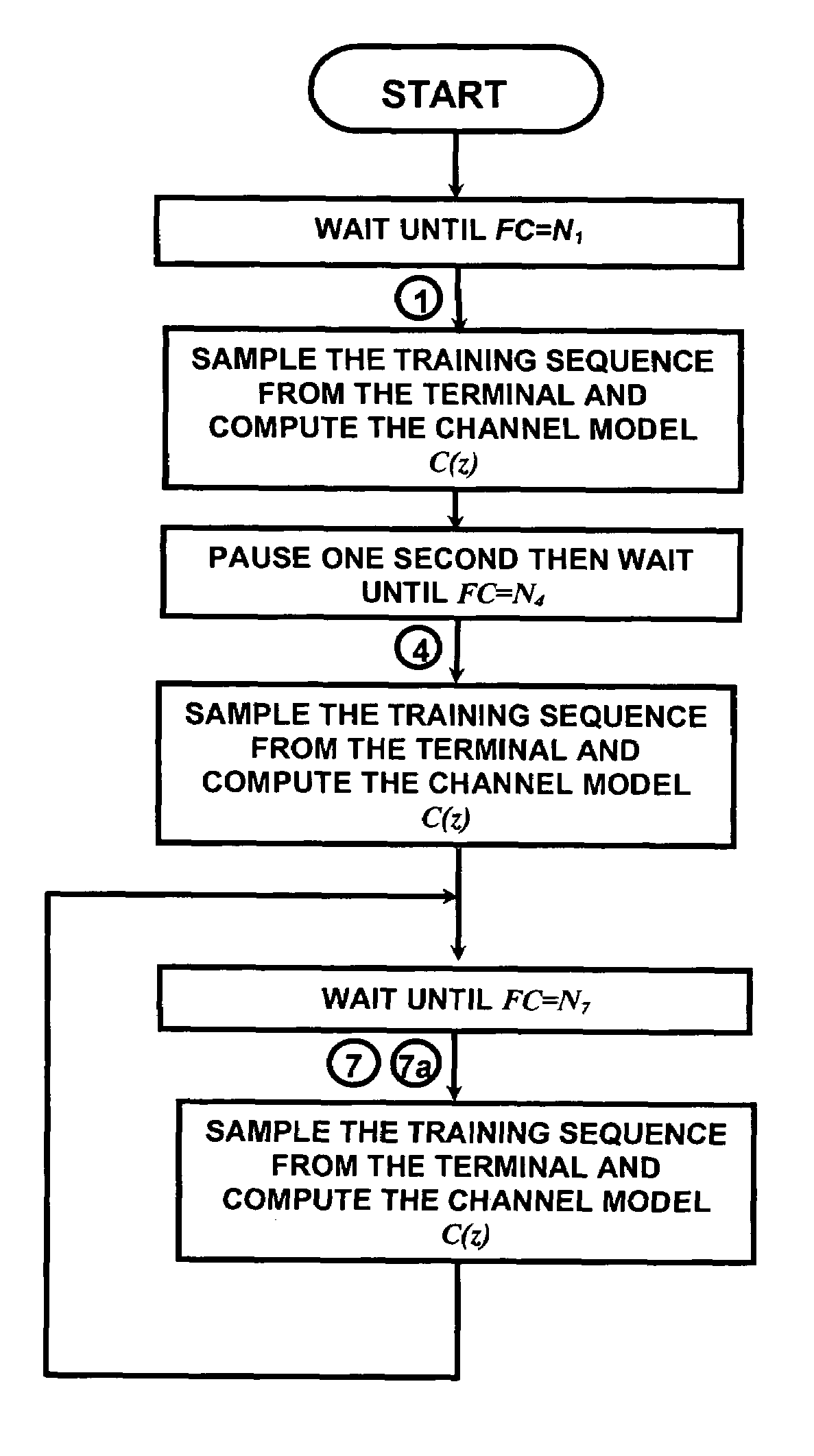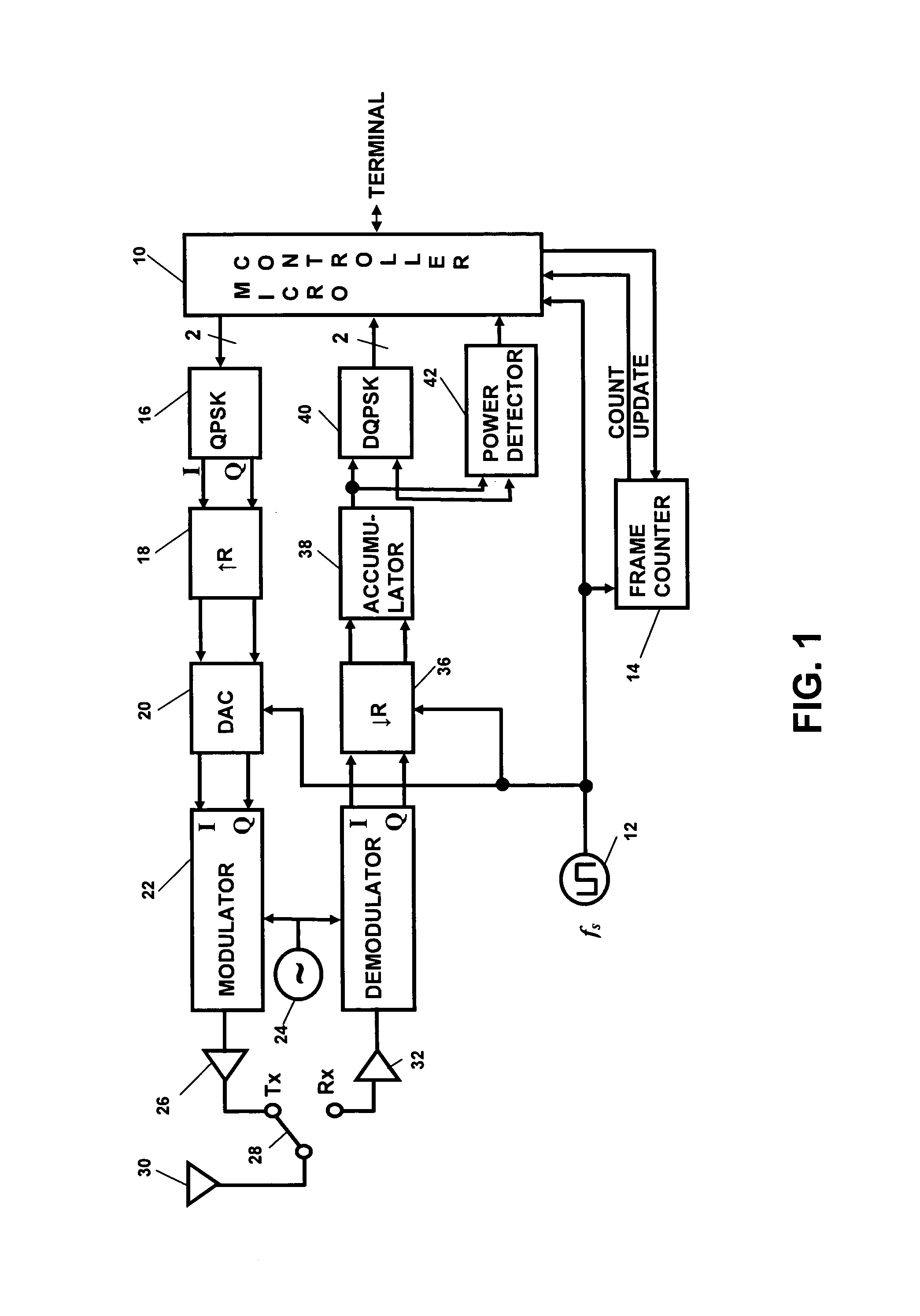Centralized synchronization for wireless networks
a wireless network and synchronization technology, applied in the direction of synchronization arrangement, wireless commuication services, radio relay systems, etc., can solve the problems of complicated process, unsatisfactory oscillators, and inability to solve complex problems such as the delay in a wireless channel, so as to achieve the effect of undoing the distortion effect of the radio channel
- Summary
- Abstract
- Description
- Claims
- Application Information
AI Technical Summary
Benefits of technology
Problems solved by technology
Method used
Image
Examples
Embodiment Construction
[0033]In the claims, the use of the word “comprising” does not exclude other elements being present. The indefinite article “a” used in the claims does not exclude another one or more of that element being present.
[0034]FIG. 1 shows the structure of one of the terminals in the network. Central to the terminal is a microcontroller 10, which handles all of the data, interfaces the data to the terminal, and all of the network and hardware protocols—including synchronization. A free-running oscillator 12 runs at the maximum symbol rate for the network (fs) and establishes when all events happen within the terminal. A typical symbol rate for this type of a terminal would be 100 MHz. Attached to the oscillator is a frame counter 14. Network time is divided into frames and events within the frame occur at a fixed number of clock cycles after the start of the frame. The frame counter simply counts the number of clock cycles of the oscillator 12 until the end of the frame is reached and then...
PUM
 Login to View More
Login to View More Abstract
Description
Claims
Application Information
 Login to View More
Login to View More - R&D
- Intellectual Property
- Life Sciences
- Materials
- Tech Scout
- Unparalleled Data Quality
- Higher Quality Content
- 60% Fewer Hallucinations
Browse by: Latest US Patents, China's latest patents, Technical Efficacy Thesaurus, Application Domain, Technology Topic, Popular Technical Reports.
© 2025 PatSnap. All rights reserved.Legal|Privacy policy|Modern Slavery Act Transparency Statement|Sitemap|About US| Contact US: help@patsnap.com



